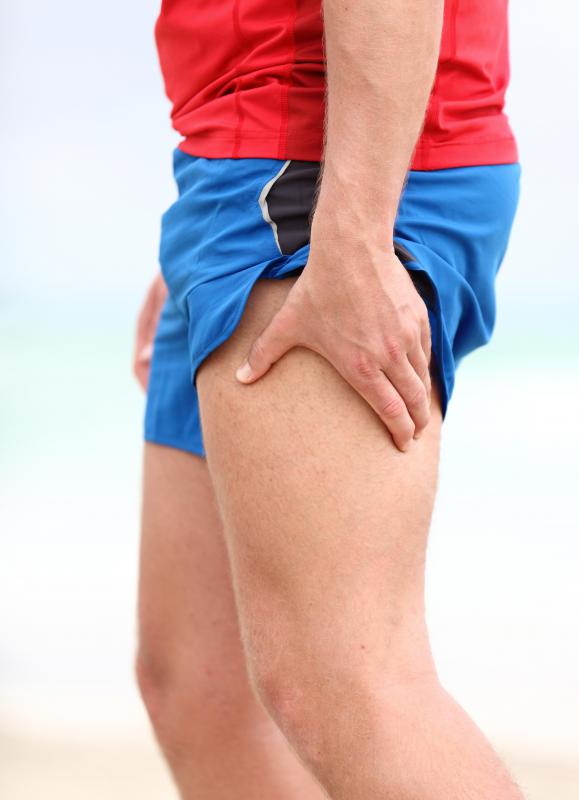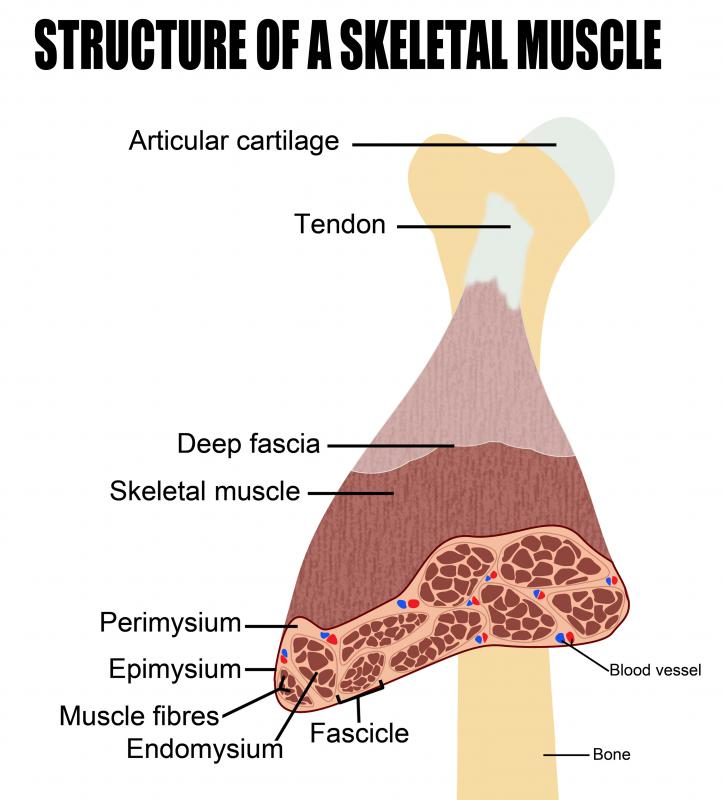At TheHealthBoard, we're committed to delivering accurate, trustworthy information. Our expert-authored content is rigorously fact-checked and sourced from credible authorities. Discover how we uphold the highest standards in providing you with reliable knowledge.
What is a Pulled Muscle?
A pulled muscle occurs when a muscle anywhere in the body is stretched beyond its means, leading to slight tearing of the tiny fibers that make up the muscle. A pulled muscle is sometimes known as a strained muscle, and the condition can be quite painful, though some instances of a pulled muscle will result in very little pain. A sufferer of a muscle pull may not have to stop the physical activity in which he or she is participating if the strain is slight; more severe strains will require the person to stop the physical activity and rest for a significant period of time.
The RICE treatment is most often used to treat a pulled muscle. RICE stands for rest, ice, compression, and elevation. These actions are used to allow the muscle tissue to heal on its own and to prevent swelling, which can lead to more pain and slower healing time. More severe instances of a pulled muscle may need more attention beyond the RICE treatment, but for minor strains, sufficient rest is usually enough to allow the injury to heal. Once little or no pain is felt, it may be necessary to participate in physical therapy or light exercise to re-strengthen the muscle.

Pulled muscles can occur for several reasons. When a person stretches a muscle beyond its normal capabilities, as is likely to occur during athletic events, the muscle can begin to tear slightly, leading to pain. If the muscle endures a load it is not prepared to handle, the muscle fibers can tear under the stress. A direct impact to a particular muscle can also cause a pulled muscle, though this is less likely than other causes. The severity of the strained muscle will vary significantly according to the cause of injury, the overall health of the person, and the strength of that particular muscle.

If a muscle strains to a point at which the muscle fibers tear completely from each other or from the tendons that connect the muscle to bone, the pulled muscle is then known as a rupture. This is a serious condition that can lead to significant pain, swelling, and bruising. A ruptured muscle is likely to bunch up at one end of its length. The muscle will more than likely need to be repaired surgically if it ruptures, which means medical attention will be necessary as soon as possible after the injury occurs.
AS FEATURED ON:
AS FEATURED ON:















Discuss this Article
Post your comments